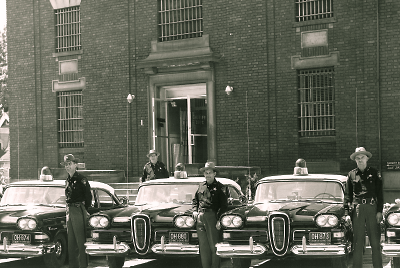The presence of hundreds of thousands of persons with mental illness locked in America’s jails and prisons today echoes a similar—if numerically smaller—crisis revealed in the pages of Psychiatric News in its May and June 1966 issues.
“A century after Dorothea Dix began her campaign for decent mental hospitals, the practice of locking up mentally ill people in jails is still widespread,” wrote managing editor Raymond Glasscote half a century ago. “The practice is by no means limited to those charged with crimes. Many thousands of people whose only offense has been the bizarre, confused, and disoriented behavior that marks some mental illnesses are held there, sometimes for many weeks.
“They fall into two principal categories: those awaiting evaluation because their behavior has suggested that they are mentally ill (and by no means all of these are suspected of being dangerous either to themselves or to others); and those already certified as being mentally ill who are awaiting transportation to a public mental hospital.”
“Compared with 1966, we have an additional tragedy today,” said APA President Renée Binder, M.D., in an interview. “Patients with psychiatric illness are being housed in jails, not so much for short-term evaluation, but for longer-term incarceration.”
In 1966, large state and county mental hospitals were still the norm, and deinstitutionalization had barely begun. Passage of the landmark Community Mental Health Act of 1963, intended to provide federal financing to states to develop community mental health centers, helped little. Despite all those hospitals, there remained a shortage of beds.
Glasscote queried mental health program directors in 14 states. A spokesperson for the Texas Department of Mental Health said, “I would estimate that over half of the mentally ill patients in Texas who are awaiting diagnosis or commitment and are considered incompetent or dangerous spend at least a few days in a local jail. Only one of the large metropolitan areas and a few of the smaller ones have made any sort of arrangement to hold patients in hospitals while awaiting transfer to the state hospitals.”
Jails may have been the only, or occasionally the best, facilities available to temporarily house such patients. Local general hospitals often were unequipped or unwilling to care for them.
“The APA-AHA Liaison Committee estimates that more than half of the general hospitals in the United States have specific prohibitions in their charters against admitting a psychiatric patient under any circumstances whatever,” wrote Glasscote. “A further consideration is whether, even if such prohibitions were removed, very many of the hospitals would have the staff with the training and experience, not to mention inclinations, to deal with disturbed patients.”
Conditions may have changed since the 1960s, but patients are no better off, said Binder.
“Fifty year later, we still have a shortage of psychiatric beds, and we lack comprehensive, coordinated community treatment facilities and programs that could serve as alternatives to hospitalization,” she said. “Patients with mental illness continue to have difficulty getting access to care in psychiatric facilities. In 2016, in contrast to 1966, patients are more likely to be boarded in emergency rooms rather than in jails, waiting for an evaluation and for placement, but this is also inappropriate. There are inadequate numbers of trained personnel in the emergency rooms, and the practice of boarding acutely psychotic, assaultive, suicidal, or disorganized patients is disruptive to the patient as well as to the medical/surgical patients who are also in the emergency room.”
Some states did better than others, reported Glasscote in the Psychiatric News article.
“All of our hospitals have taken active steps to help educate the communities and law enforcement bodies,” said Pennsylvania’s commissioner of mental health, William P. Camp, M.D. “Many of our hospitals are willing to provide a physician to visit the jail and examine the individual being held so that he can be hospitalized quickly.”
Most striking about the difference between then and now is the numbers involved. Glasscote quoted an article from the Miami Herald of March 1966: “Last year, during a 10-month study period,” the article reported, “136 persons were confined in Dade County jail (Miami) after the county judge’s court found them mentally incompetent. Another 150 were ordered by the criminal courts to undergo psychiatric evaluation at Jackson Memorial Hospital, but they were sent to jail instead.”
By comparison, more than 4,000 people with mental illnesses sit in Miami Dade County jails today, according to Miami Judge Steven Leifman, and that is after five years’ worth of reforms that increased opportunities for diversion and treatment while decreasing the population from 7,800.
“We never deinstitutionalized; we just transferred responsibility from a hospital system to the prison system,” Leifman said.
“Plus ça change, plus c’est la meme chose,” agreed Binder. “The more things change, the more things stay the same. With the closure of the state hospitals and the lack of development of community alternatives, the jails and prisons have become the de facto psychiatric facilities of the 21st century.” ■
This article is one in a series marking the 50th anniversary of the publication of Psychiatric News.


